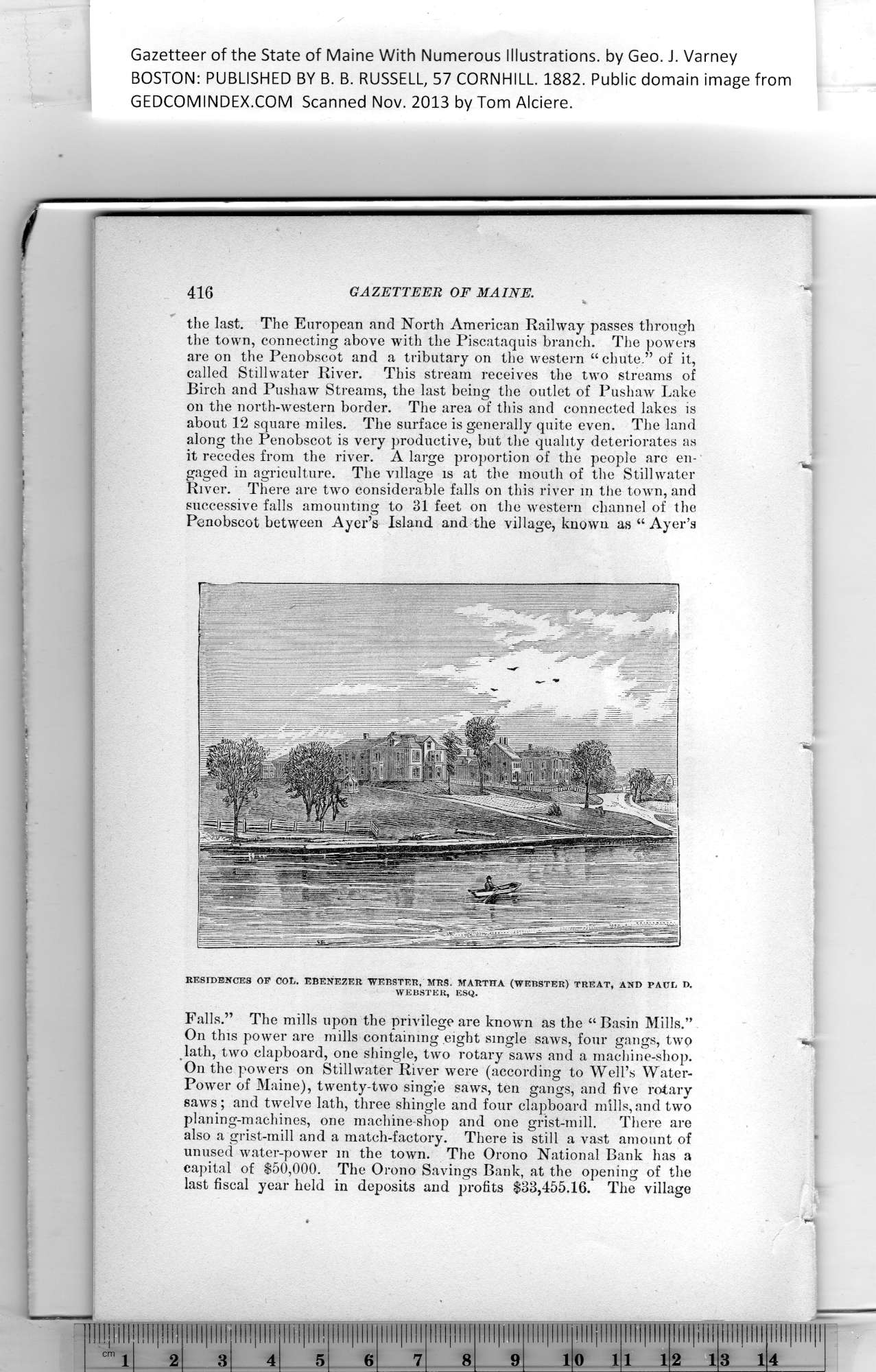|
Gazetteer of the State of Maine With Numerous Illustrations, by Geo. J. Varney
BOSTON: PUBLISHED BY B. B. RUSSELL, 57 CORNHILL. 1882. Public domain image from
416 GAZETTEER OF MAINE.
the last. The European and North American Railway passes through
the town, connecting above with the Piscataquis branch. The powers
are on the Penobscot and a tributary on the western “ chute.” of it,
called Stillwater River. This stream receives the two streams of
Birch and Pushaw Streams, the last being the outlet of Pushaw Lake
on the north-western border. The area of this and connected lakes is
about 12 square miles. The surface is generally quite even. The land
along the Penobscot is very productive, but the quality deteriorates as
it recedes from the river. A large proportion of the people are en-
gaged in agriculture. The village is at the mouth of the Stillwater
River. There are two considerable falls on this river in the town, and
successive falls amounting to 31 feet on the wrestern channel of the
Penobscot between Ayer’s Island and the village, known as “ Ayer’s
Falls.” The mills upon the privilege are known as the “ Basin Mills.”
On this power are mills containing eight single saws, four gangs, two
lath, two clapboard, one shingle, two rotary saws and a machine-shop.
On the powers on Stillwater River were (according to Well’s Water-
Power of Maine), twenty-two single saws, ten gangs, and five rotarv
saws; and twelve lath, three shingle and four clapboard mills,and two
planing-machines, one machine-shop and one grist-mill. There are
also a grist-mill and a mateh-factory. There is still a vast amount of
unused water-power in the town. The Orono National Bank has a
capital of $50,000. The Orono Savings Bank, at the opening of the
last fiscal year held in deposits and profits $33,455.16. The village
PREVIOUS PAGE ... NEXT PAGE
This page was written in HTML using a program written in Python 3.2
|
